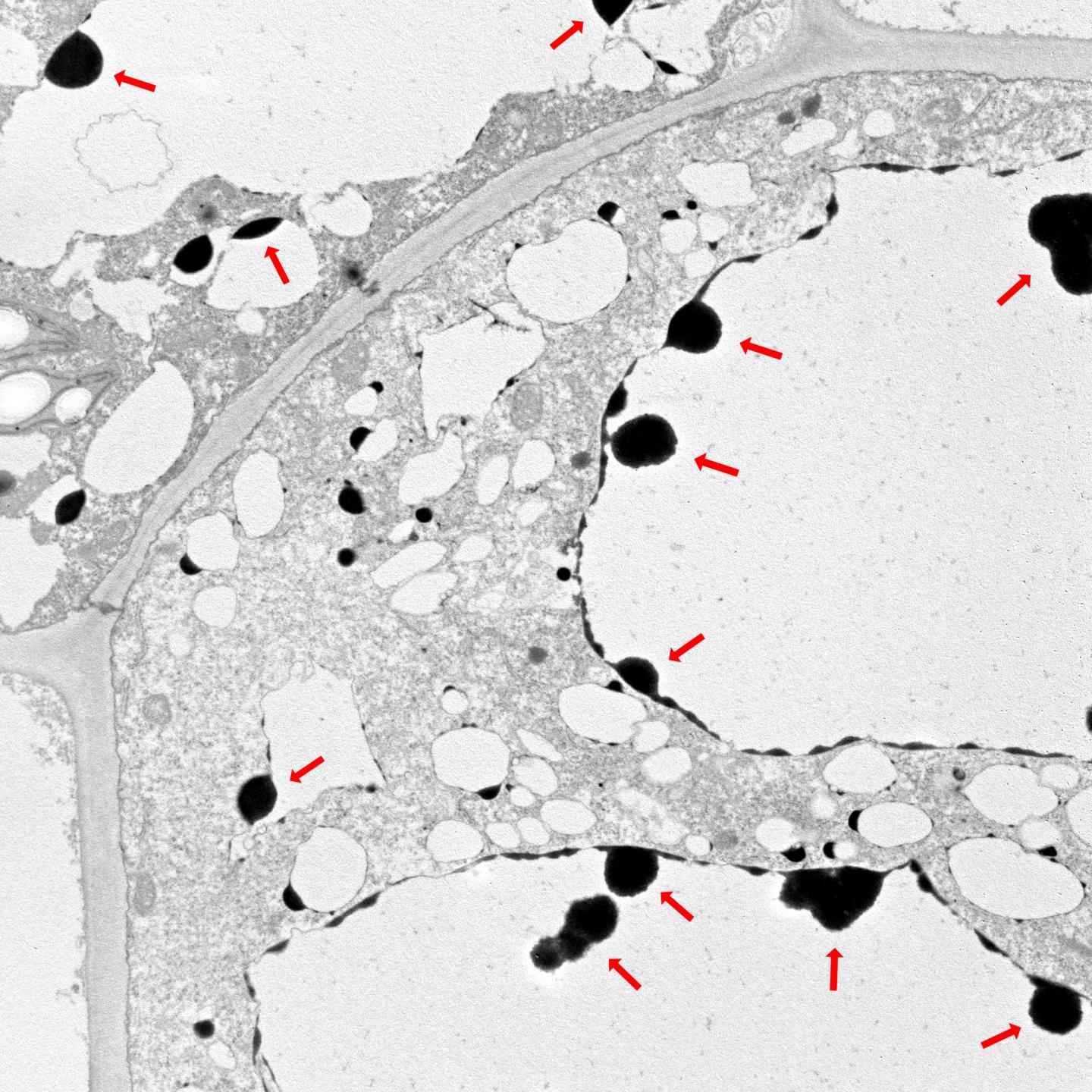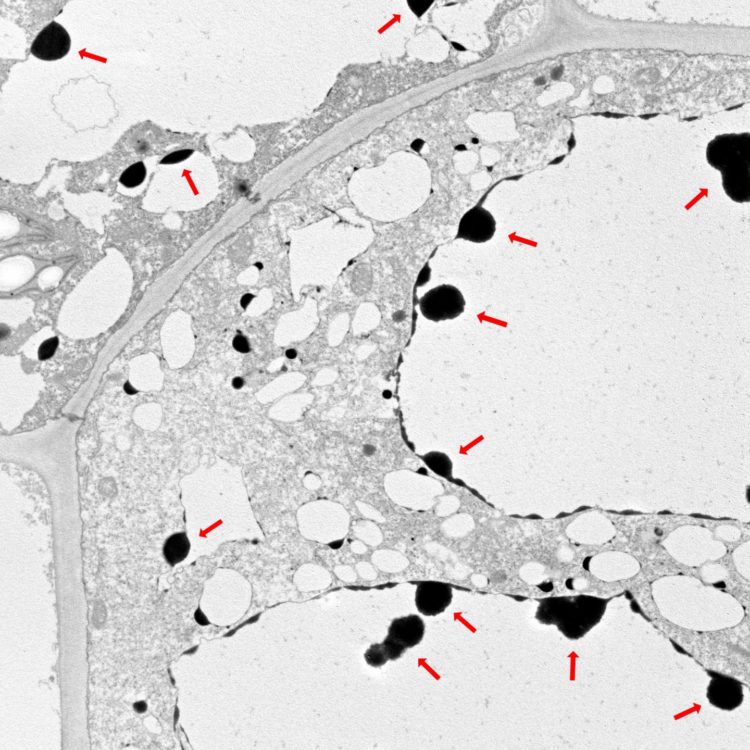Loss of protein homeostasis is involved in programmed cell death during hybrid lethality in plants

Credit: Tetsuya Yamada, TUAT
Hybrid plants – those produced by crossing two different types of parents – often die in conditions in which both parents would survive. It’s called hybrid lethality. Certain hybrid tobacco plants, for example, thrive at 36 degrees Celsius, but die at 28 degrees Celsius, which is the temperature at which both parents would thrive.
A team of researchers at Tokyo University of Agriculture and Technology (TUAT) based in Japan have begun to unravel the molecular mechanisms by which hybrid tobacco plant cells meet their demise. The researchers published their results online on July 15 in Scientific Reports, a Nature journal. Hybrid tobacco plants were chosen for the study because they offer a good genetic model to study other hybrid plants.
When moved to the lower temperature, hybrid tobacco cells induce a process called programmed cell death. It sounds dramatic, but it’s normal and healthy – to a point. In humans, for instance, skin cells slough off when new ones are ready to take over. It’s a constant renewal. However, in some circumstances, the cells become overzealous and die off before there are replacements available, causing the entire organism to die.
“What induces programmed cell death related to hybrid lethality in plants?” asked Tetsuya Yamada, paper author and associate professor at the United Graduate School of Agricultural Science at Tokyo University of Agriculture and Technology. “This is the problem we set out to better understand.”
The researchers used powerful imaging tools to see inside the hybrid cells. They found protein aggregates – proteins that are misfolded or otherwise mutated – accumulated in hybrid cells.
“We found programmed cell death is induced in plant cells by the accumulation of protein aggregates resulting from loss of protein homeostasis,” Yamada said.
Protein homeostasis refers to the intricate and fragile balance between the development of new proteins and the death of old proteins in the already delicate cellular ecosystem. The loss of homeostasis may resulted from an autoimmune response, which is induced after the temperature shift, according to Yamada.
In an effort to combat this cellular decay, the researchers treated hybrid tobacco cells with a type of salt (sodium-4-phenylbutyrate) known to help proteins fold properly. Yamada calls it a “chemical chaperone.” It not only stopped the accumulation of protein aggregates, but it also stopped what had previously been the irreversible progression of cell death.
Next, Yamada and the researchers plan to further investigate how the accumulation of protein aggregates are involved in inducing programmed cell death, specifically in relation to disease resistance and environmental stress in plants.
“We will also clarify the molecular mechanisms involved in the regulation of protein homeostasis,” Yamada said. “The ultimate goal is to establish a genetic improvement technique for developing crop varieties with improved disease resistance and environmental stress tolerance by enhancing the function of maintaining protein homeostasis.”
###
Other contributors from the United Graduate School of Agricultural Science at Tokyo University of Agriculture and Technology include Naoya Ueno, Megumi Kashiwagi and Motoki Kanekatsu. Wataru Marubashi of the Faculty of Agricultural Science at Meiji University also contributed.
This work was supported in part by the Japan Society for the Promotion of Science.
About Tokyo University of Agriculture and Technology (TUAT)
TUAT is a distinguished university in Japan dedicated to science and technology. TUAT focuses on agriculture and engineering that form the foundation of industry, and promotes education and research fields that incorporate them. Boasting a history of over 140 years since our founding in 1874, TUAT continues to boldly take on new challenges and steadily promote fields. With high ethics, TUAT fulfills social responsibility in the capacity of transmitting science and technology information towards the construction of a sustainable society where both human beings and nature can thrive in a symbiotic relationship. For more information, please visit http://www.
Original publication:
Accumulation of protein aggregates induces autolytic programmed cell death in hybrid tobacco cells expressing hybrid lethality.
Naoya Ueno, Megumi Kashiwagi, Motoki Kanekatsu, Wataru Marubashi & Tetsuya Yamada*.
Scientific Reports volume 9, Article number: 10223 (2019)
https:/
Media Contact
Yutaka Nibu, Ph.D.
[email protected]
81-423-887-550
Related Journal Article
http://dx.





